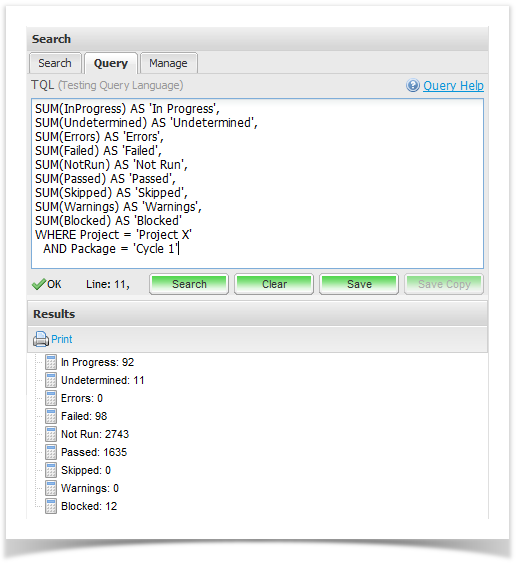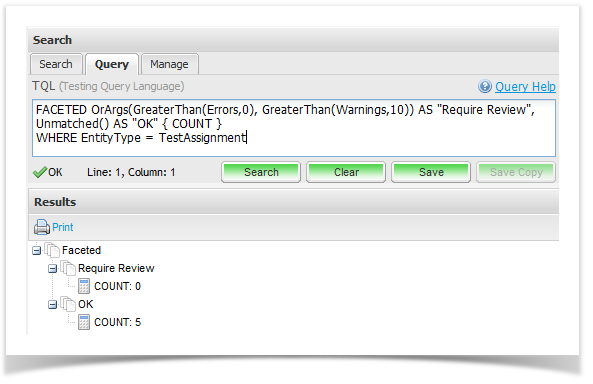Execution Totals
Overview
When managing the execution of tests, it is valuable to be able to get an overview of not only progress, but a breakdown of testing outcomes (passes, failures etc.)
If you are using manual tests only (test scripts) or do not have a Duette license, then this can often be achieved by just using a "GROUP BY" on the status of script assignments:
GROUP BY Status { COUNT } WHERE EntityType = ScriptAssignment
If you are using Duette and have a mix of automated and manual test results, you will often want to get a combined view of progress across all tests. To do this, you can use the following "Total" fields.
Execution Totals
Other Totals
- Assignments Count
- Attachment Count
- Automated Tests Count
- Incident Count
- Iterations
- Requirements Count
- Script Step Count
- Test Scripts Count
- Total Nodes
- Total Results
How They are Calculated
For automated tests, these fields will provide counts as present in the imported result files.
For manual tests (test scripts) these counts will have a value of either 0 or 1, if the status matches the type of the field, this also means that some counts (such as Warnings, Errors, Iterations etc.) will always be 0, as they are not supported as possible outcomes for a script assignment (manual test).
Examples
To generate the execution status information (as used to display the "Execution Status" graph displayed above the execution grid) you can use the following query:
SUM(InProgress) AS 'In Progress', SUM(Undetermined) AS 'Undetermined', SUM(Errors) AS 'Errors', SUM(Failed) AS 'Failed', SUM(NotRun) AS 'Not Run', SUM(Passed) AS 'Passed', SUM(Skipped) AS 'Skipped', SUM(Warnings) AS 'Warnings', SUM(Blocked) AS 'Blocked' WHERE Project = 'Project X' AND Package = 'Cycle 1'
Here is what the results will look like:
This next example splits all the automated test assignments into two groups - those that have 1 or more errors OR 10 or more warnings, and the remainder which are considered "OK":
FACETED OrArgs(GreaterThan(Errors,0), GreaterThan(Warnings,10)) AS "Require Review",
Unmatched() AS "OK" { COUNT }
WHERE EntityType = TestAssignment
Here is what the results will look like for that query:

